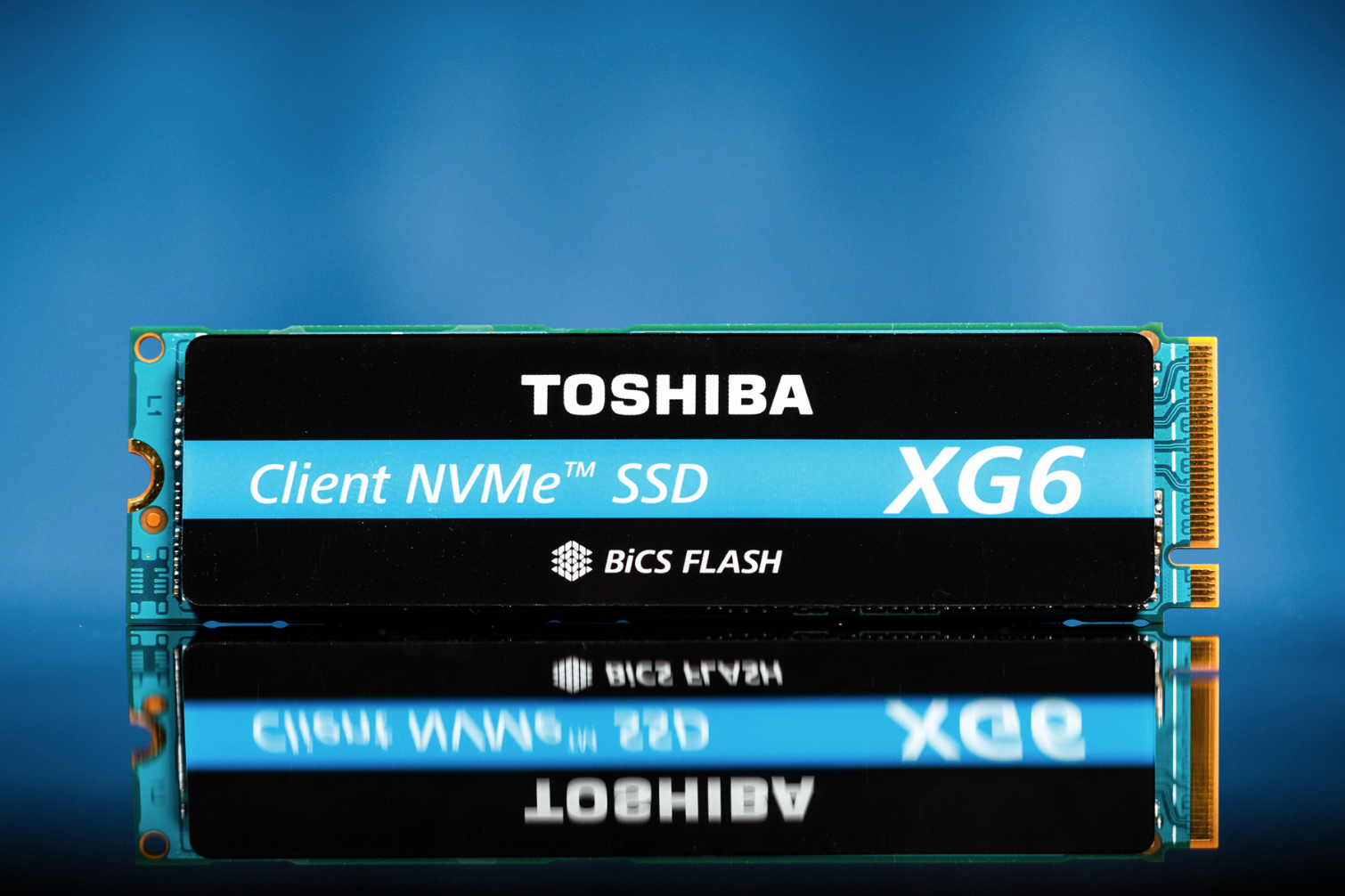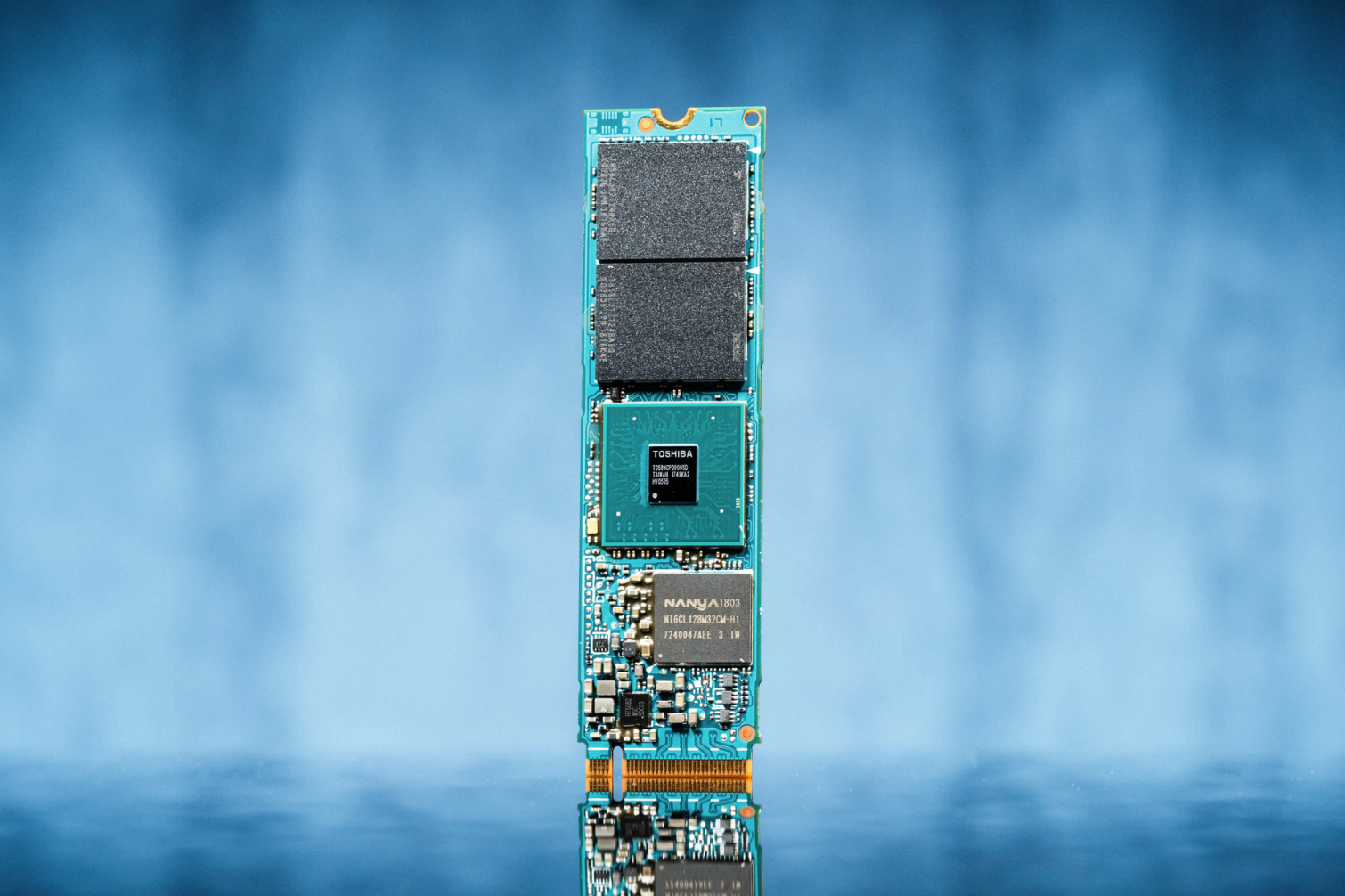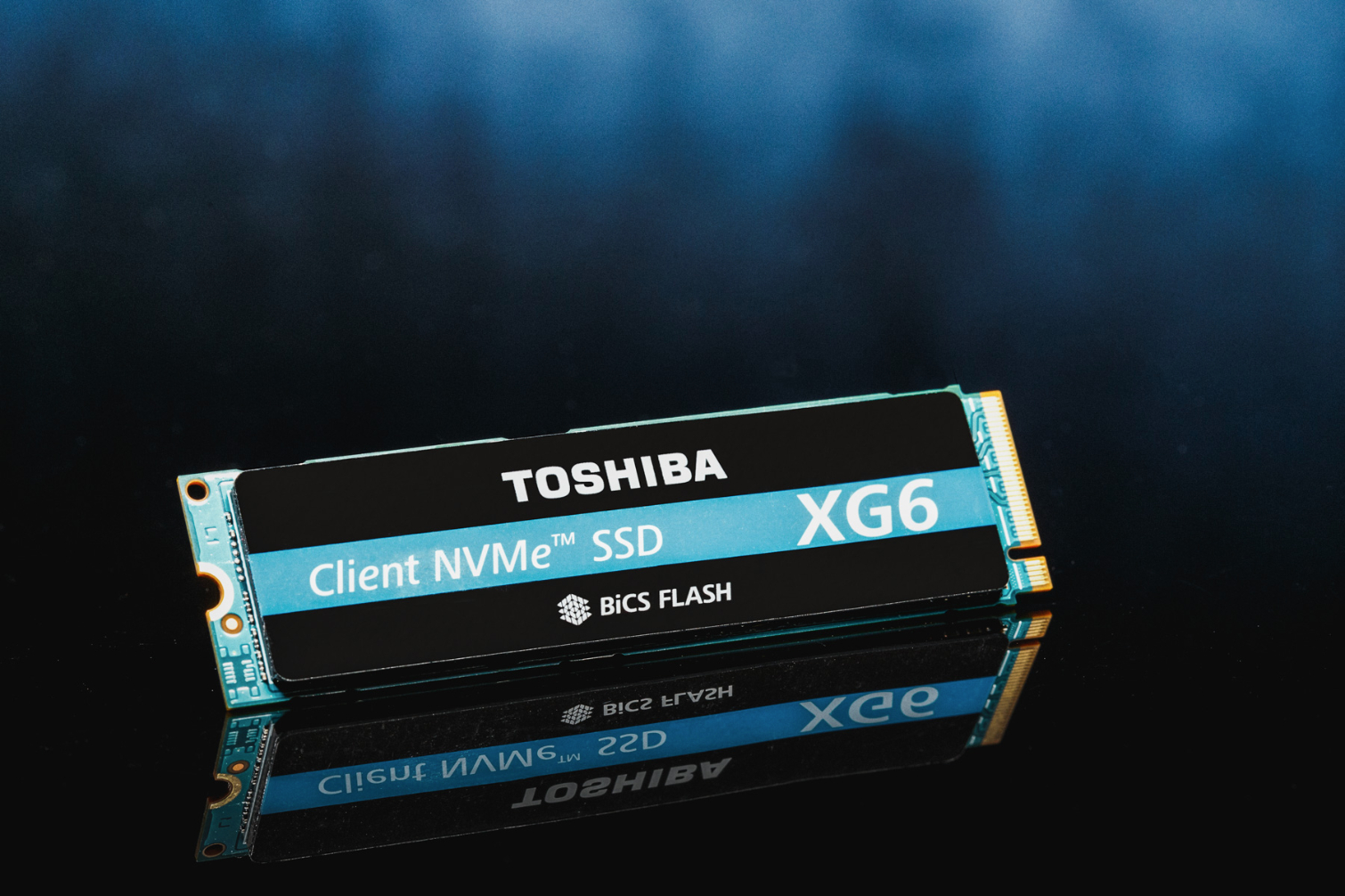Tom's Hardware Verdict
Toshiba's OEM XG6 comes packing the goodness of 3D TLC BiCS flash and a five-year warranty, but you can't buy it at retail. We'll see this design ported over to Toshiba's consumer lineup soon. Toshiba sells flash to other SSD vendors, so we'll see enthusiast-class models with the same flash soon. In the meantime, you can find this drive in an OEM laptop or desktop near you.
Pros
- +
M.2 2280 single-sided form factor
- +
Sequential throughput
- +
Great power efficiency
Cons
- -
Small SLC cache
- -
You can't buy it separately
Why you can trust Tom's Hardware
Features and Specifications
SSDs are steadily displacing HDDs in the consumer market, but progress is slow in some areas. Yes, more notebooks are coming with SSDs by default, but adoption in OEM desktop PCs has been slower. Today we take a close look at Toshiba’s latest OEM-oriented SSD. Toshiba designed the XG6 for desktop PCs, mobile systems, embedded systems, and even data centers.
That means the XG6 could power your next laptop or pre-built PC. More importantly for us, the XG6 comes with Toshiba's new 96-Layer TLC BiCS flash that will soon power the newest enthusiast-class SSDs from multiple vendors. The new flash promises more performance and efficiency at a lower price point, and based on our testing, it delivers.
As mentioned, the Toshiba XG6 is the industry’s first SSD with Toshiba’s latest 96-Layer 3D TLC flash. Toshiba’s new 512Gbit die provides a 40% capacity increase over the company's previous-gen 64-layer flash. The increased density results in lower manufacturing costs, which in turn allows Toshiba to be more aggressive with its SSD pricing.
Toshiba's new flash supports Toggle 3.0 speeds (667-800 MT/s), which means its program and read latency is lower than the company's previous-gen Toggle 2.0 flash (400 MT/s). Toshiba's new flash is not quite as fast as Samsung’s latest 256Gbit 3D flash that supports Toggle 4.0, but Toshiba's increased capacity is the big attraction.
We normally expect new flash to be paired with a new SSD controller, but the XG6 uses the same controller as the XG5. Toshiba's firmware and flash improvements, update to the NVMe 1.3a spec, and focus on improved power efficiency have yielded tremendous improvements, though.
Toshiba’s XG6 uses an enhanced SLC write buffer to provide higher sequential write speeds than the XG5 and up to twice the performance in random workloads. That's a surprisingly big improvement considering the SSD uses the same controller, but it's clear the advantages of the much faster 96-layer flash are shining through.
Specifications
| Product | Toshiba XG6 256GB | Toshiba XG6 512GB | Toshiba XG6 1TB |
| Pricing | N/A | N/A | N/A |
| Capacity (User / Raw) | 256GB / 256GB | 512GB / 512GB | 1024GB / 1024GB |
| Form Factor | M.2 2280 S2 (Single-sided) | M.2 2280 S2 (Single-sided) | M.2 2280 S2 (Single-sided) |
| Interface / Protocol | PCIe 3.1 x4 / NVMe 1.3a | PCIe 3.1 x4 / NVMe 1.3a | PCIe 3.1 x4 / NVMe 1.3a |
| Controller | TC58NCP090GSD | TC58NCP090GSD | TC58NCP090GSD |
| DRAM | NANYA LPDDR3 | NANYA LPDDR3 | NANYA LPDDR3 |
| Memory | Toshiba BiCS FLASH 96-layer 3D TLC | Toshiba BiCS FLASH 96-layer 3D TLC | Toshiba BiCS FLASH 96-layer 3D TLC |
| Sequential Read | Up to 3,180 MB/s | Up to 3,180 MB/s | Up to 3,180 MB/s |
| Sequential Write | Up to 2,960 MB/s | Up to 2,960 MB/s | Up to 2,960 MB/s |
| Random Read | Up to 355,000 IOPS | Up to 355,000 IOPS | Up to 355,000 IOPS |
| Random Write | Up to 365,000 IOPS | Up to 365,000 IOPS | Up to 365,000 IOPS |
| Encryption | TCG Pyrite and OPAL 2.01 as an option (TCG Pyrite: x = 0, TCG OPAL: x = A) | ||
| Endurance | N/A | N/A | N/A |
| Part Number | KXG6xZNV256G | KXG6xZNV512G | KXG6xZNV1T02 |
| Warranty | 5-Years | 5-Years | 5-Years |
The Toshiba XG6 comes in three capacities of 256GB, 512GB, and 1TB. The drive offers up to 3.18/2.96 GB/s of sequential read/write throughput and up to 355,000/365,000 random read/write IOPS. Toshiba measures performance when the data lands in the SLC cache, a fast buffer that absorbs incoming data, which means these measurements are peak values. We recorded ~1.6 GB/s of throughput when data spilled over to the native TLC flash. That's actually very competitive compared to other SSDs.
Get Tom's Hardware's best news and in-depth reviews, straight to your inbox.
Power consumption is one of the most important considerations for OEM devices. Toshiba's new flash features a 1.2V I/O rating. That's 33% lower than the previous gen’s 1.8V, which equates to big power savings. The XG5 is rated for 4.2W of active power consumption and falls to just 3mW in its lowest power state (L1.2). We'll put those claims to the test.
The XG5 is an OEM-oriented product, so pricing varies based on the customer. Toshiba also offers models that support either TCG Pyrite or TCG OPAL 2.01 encryption. Toshiba backs the XG6 with a five-year warranty, but OEMs have wide latitude in how they pass that warranty down to their customers. Toshiba didn't provide us with an endurance rating because the OEM also dictates it.
A Closer Look




The XG6 comes in an M.2 2280 S2 single-sided form factor with the Toshiba TC58NCP090GSD SSD controller. This controller communicates with the host over a PCIe 3.1a x4 interface with the NVMe 1.3a protocol.
The 1TB XG6 has a 512MB Nanya DRAM buffer. Most SSDs have a 1MB-to-1GB DRAM-to-NAND ratio, but recent SSD designs appear to signal a move to lower ratios. For instance, the 1TB Intel 660p only comes with 256MB of DRAM.
The XG5 packs 1TB of storage into just two flash packages. That equates to 953GB of usable space after you format the drive in Windows. Laptop makers are intensely focused on reducing weight, and the XG6's 7.3 grams is much more palatable than the typical 40-70 grams for a SATA SSD.
MORE: Best SSDs
MORE: How We Test HDDs And SSDs
MORE: All SSD Content

Sean is a Contributing Editor at Tom’s Hardware US, covering storage hardware.
-
Brian_R170 Why bother to review this model if consumers can't even buy it except in a pre-built system? How many people make their system purchase decisions based on the SSD inside? Outside of boutique stuff, how many OEMs actually list the SSD model in their specifications?Reply
Plus, any future SSD design based off of this model won't likely have identical specs, so you'd have to retest it anyway. -
2Be_or_Not2Be Why is the Intel Optane 905P included on some benchmarks and not on others? It would be nice to have consistency throughout the review. Either have it in all of the benchmarks, or just don't include it at all.Reply
I understand you may be including results from a previous test on the 905P that may not have had all of the same tests as this XG6. However, it's frustrating to me when I see it one benchmark (I do like that it's included), but then when I want to compare against it on another one, it's not there.
So I would say if you don't have it for all of the tests, just exclude it from all of them. -
Paul Alcorn Reply21276173 said:Why is the Intel Optane 905P included on some benchmarks and not on others? It would be nice to have consistency throughout the review. Either have it in all of the benchmarks, or just don't include it at all.
I understand you may be including results from a previous test on the 905P that may not have had all of the same tests as this XG6. However, it's frustrating to me when I see it one benchmark (I do like that it's included), but then when I want to compare against it on another one, it's not there.
So I would say if you don't have it for all of the tests, just exclude it from all of them.
Thanks for the feedback, it is appreciated. Over the last few months we've changed our test regimen entirely to more accurately reflect real-world use cases, much of this due to reader feedback. We are still in a state of flux somewhat with the current line up of tests as we optimize the suite to focus on the things that matter most, and avoid things that don't. Reader feedback has a big impact on our decisions. In either case, the adjustments have led to a few devices not being included until we can complete backfill testing, but we'll work to rectify that. -
Paul Alcorn Reply21277464 said:Where is Chris?
Chris decided to pursue another opportunity, which is unfortunate but part of the business at times. Sean, who has years of experience testing and reviewing storage, has stepped into the role now.
